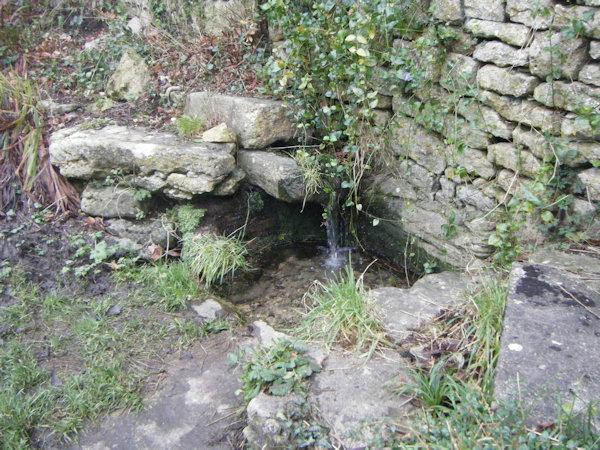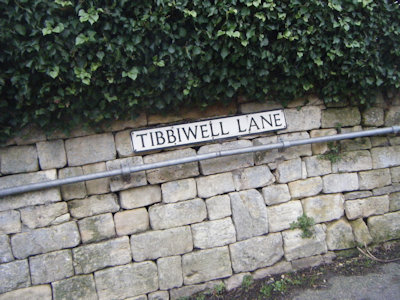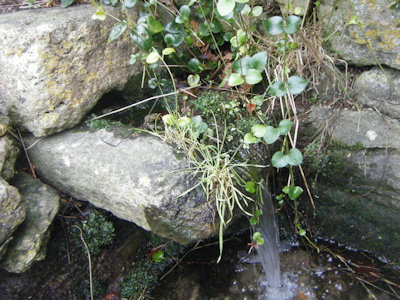 |
Dedication: Saint Tibba? Location: Painswick Coordinates: 51.785042N, -2.191540W Grid reference: SO868096 Heritage designation: none |
HOME - ENGLAND - GLOUCESTERSHIRE
 |
Dedication: Saint Tibba? Location: Painswick Coordinates: 51.785042N, -2.191540W Grid reference: SO868096 Heritage designation: none |
It is not certain which saint Painswick's second holy well, which is commonly called "St Tabitha's Well", (the other being St Frideswide's Well, which, though now destroyed, seems to have given its name to "Friday Street") is dedicated to. In the 15th and 16th centuries, the well was variously recorded as "Toby", "Towey" and "Tobye" Well, which has led many to believe that the well was not in fact dedicated to a saint but was merely known as "Toby's Well", and was possibly named after a local person. Gloucestershire Historic Environment Record states that the name "Towy or Tobye was possibly derived from a Celtic word for running water", which was also theorised by Welbore St Clair Baddeley, in Cotteswold Manor: Being a History of Painswick (1907). Of course, it is quite possible that the well's current name was attained through corruption of "Toby", but it is also worth noting that spelling was rather dubious in 16th, and particularly in the 15th centuries: "Holy Well" was often spelt something along the lines of "Hallyeywell" during this time.
It is, nonetheless, unlikely that the well was initially dedicated to St Tabitha, a minor character who appears in the Book of Acts and is said to have been brought back to life by St Peter. On the contrary, it seems much more plausible that the well was dedicated originally to a local saint. It has been theorised that the saint of the well may be St Tybie, a daughter of the Welsh king St Brychan, who probably lived during the 6th century; she is commemorated in the name of Llandybie, a small village in Carmarthenshire. She is not known to have left Wales, although, as very little is recorded about her life, it is always possible that she visited Gloucestershire. It is more likely, however, that the well was dedicated to St Tibba, the patron saint of falconers, who lived in Rutland during the 7th century, and was the daughter of King Penda of Mercia (some sources say that she was his niece). St Kyneburga, alternatively spelled "Cyneburga", was the first abbess of Gloucester Abbey, which is now Gloucester Cathedral, and is said to have borne some relation to St Tibba (again, whilst some sources say that Tibba was her sister, the facts are uncertain). As Painswick is located only a few miles away from Gloucester, it is probably most likely that St Tibba is the patron saint of Tibby Well.
Though little is known about the Tibby Well's early history, it is certain that the spring provided an essential source of clean water in the village during the medieval era, and for much time afterwards. In the late medieval period, several rules were established regarding the well, which slowly became more strict. Initially, a 20d fine was imposed on any person who was caught washing clothes in the well; later, this rule was extended to include the prohibition of washing any vile or impure thing, specifically swine entrails, in the spring. On the 16th of October, 1617, it was ordered, according to Welbore St Clair Baddeley, writing in History of the Church of St. Mary at Painswick (1902), that "one Charles Stevens shall lop certain of his trees which grow out of hand to the detriment of the Via Regia, near the Fountain called Tybbye-Well, before Xmas; or in default, shall pay 10s". In 1617, ten shillings was worth roughly £65 in today's money.
Although it is almost certain that the well was thought to possess healing powers during the medieval era, the first (and only) recorded "miraculous" healing to have taken place at the well was documented in 1912 in volume 70 of the Publications of the Folklore Society; it probably reflects a much earlier medieval custom:
|
At "Tibby Well," down "Tibbywell Lane," Painswick, an elderly woman, drawing the water for household use, told me she had mixed some of it with bread and made a poultice which cured her husband's eyes; the virtue was more in the water than in the bread. |
Today, the Tibby Well can still be seen at the side of Tibbiwell Lane. When I visited in January 2025, a good supply of water was issuing from the spring (it has, apparently, never been known to run dry), and the water was rather warm, at least compared to the cold air. The stonework around the spring, which is most likely medieval, seemed to be in good condition.
 |
 |
 |
|
Access: The well is located at the side of a quiet public road. |
Copyright 2025 britishholywells.co.uk